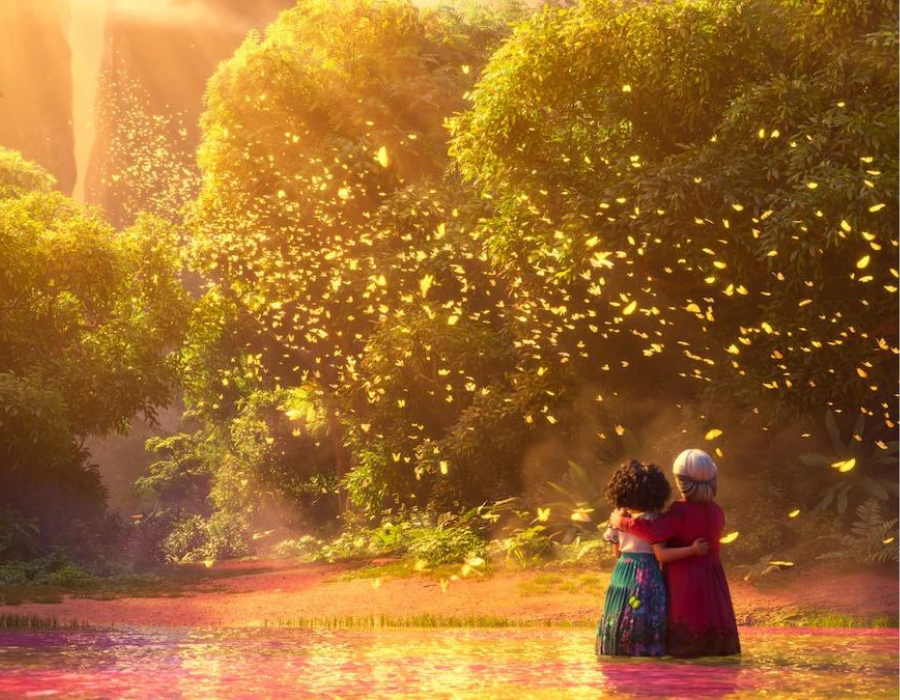'Encanto' Directors Byron Howard and Jared Bush Break Down The Making of 'Dos Oruguitas' Scene In New Video

You might think that animation is simpler than regular acting - after all, you don't have to worry about camera cuts or doing multiple takes or actors forgetting their lines. When everything is put together in a controlled environment, it makes it all seem so much more streamlined and simple - but actually, a lot of the time, animation can be even MORE complicated than traditional film acting.
In a new video about the making of one particular scene in Disney's biggest film of the year - Encanto - we get to listen to directors Byron Howard and Jared Bush break down a couple of examples of why that is.
In the video, the two directors talk about the making of the scene for the Oscar-nominated song "Dos Oruguitas," the heartfelt and emotional spanish-language song that plays at the end of the film, over a heartbreaking scene that depicts what truly happened the day that Abuela Alma and Abuelo Pedro were forced to flee their homes - the day he died, and the family's miracle was born.
"Every department was firing on all cylinders to creat something that is greater than the sum of its parts."
That's what really goes into the making of a scene like this - because, while you don't have to worry about actors and cameras and lighting and costuming and all that, you do have to bring together different departments doing voice acting and animation and sound and storyboarding, which can involve making choices that people ordinarily wouldn't even have to think about.
"We spent a ton of time figuring out, how many butterflies did we need? And we kept adding literally hundreds more, and hundreds more, and what are they doing, and what does the murmuration look like...but I think I remember, every time we saw it, we were like "double the butterflies," and then we saw it again and we were like "this is way too many," then we're like "nope, double it again!"
If you were working with real butterflies in real life, you wouldn't have to worry about all these tiny details; you'd just put as many butterflies as possible in a box, then release them when the cue came and hope for the best.
Additionally, sometimes, in order to bring up the realism, a team will add back in an element that would normally only be relegated to filmed moments: For example, they treated the resolution scene between Mirabel and Abuela Alma as though it was literally a two camera scene being shot with two actors.
"I think Andrew Ford animated this moment, if I'm not mistaken," Bush said, giving credit to an animator who went above and beyond.
"He animated both sides of both characters having this conversation and didn't worry about camera placement yet. So often, in animation, you're with the character that's speaking, but we wanted to be with the character that was feeling, and to see that emotion hitting her face. And so after we actually had the performance, then we chose who to be on camera for what part of that."
So there are litreally parts of this scene that an animator painstakingly worked on, just so that they would have raw material that looked like real actors doing a scene for the directors and editors to cut from, that we never ever saw. THAT is dedication.
(Also, interested fans may want to know: If you've been keeping the headcanon that it was Abuelo Pedro who was singing the words to Dos Oruguitas, you're basically right on the money - the directors think of it that way too.
"It sounds like an old folk song - or it might be a song that the spirit of Abuelo Pedro is sort of singing a little bit - that started to make a lot of sense to us.")
© 2025 Enstarz.com All rights reserved. Do not reproduce without permission.





